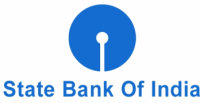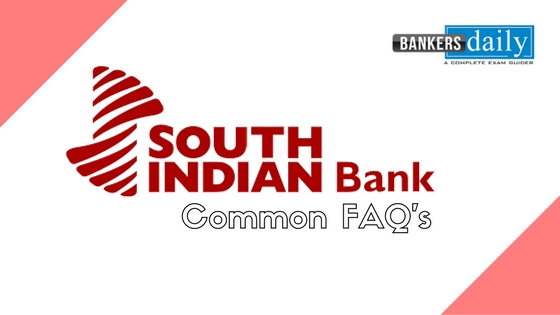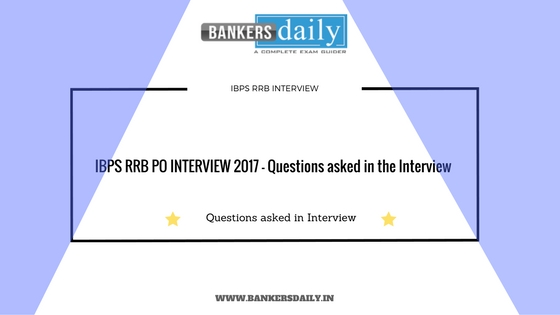IMPORTANT BANKING TERMS-ABBREVIATION PART-II
IMPORTANT BANKING TERMS-ABBREVIATION PART-II
- NPCI
- National Payments Corporation of India (NPCI), an umbrella organisation for operating retail payments and settlement systems in India, is an initiative of Reserve Bank of India (RBI) and Indian Banks’ Association (IBA) under the provisions of the Payment and Settlement Systems Act, 2007, for creating a robust Payment & Settlement Infrastructure in India.
- Considering the utility nature of the objects of NPCI, it has been incorporated as a “Not for Profit” Company under the provisions of Section 25 of Companies Act 1956 (now Section 8 of Companies Act 2013), with an intention to provide infrastructure to the entire Banking system in India for physical as well as electronic payment and settlement systems.
- AML
- Anti money laundering (AML) refers to a set of procedures, laws and regulations designed to stop the practice of generating income through illegal actions. Though anti-money-laundering laws cover a relatively limited number of transactions and criminal behaviours, their implications are far-reaching.
- NACH
- National Payments Corporation of India (NPCI) has implemented “National Automated Clearing House (NACH)” for Banks, Financial Institutions, Corporate and Government a web based solution to facilitate interbank, high volume, electronic transactions which are repetitive and periodic in nature.
- NACH System can be used for making bulk transactions towards distribution of subsidies, dividends, interest, salary, pension etc. and also for bulk transactions towards collection of payments pertaining to telephone, electricity, water, loans, investments in mutual funds, insurance premium etc.
- National Automated Clearing House (NACH) is a centralised system, launched with an aim to consolidate multiple ECS systems running across the country and provides a framework for the harmonization of standard & practices and removes local barriers/inhibitors.
- USSD
- The innovative payment service *99# works on Unstructured Supplementary Service Data (USSD) channel. This service allows mobile banking transactions using basic feature mobile phone, there is no need to have mobile internet data facility for using USSD based mobile banking. It is envisioned to provide financial deepening and inclusion of under banked society in the mainstream banking services.
- *99# service is currently offered by 51 leading banks & all GSM service providers and can be accessed in 12 different languages including Hindi & English.
- *99# service has been launched to take the banking services to every common man across the country.
Funds Transfer limit:
- Rs 5,000/day
- Rs 50,000/annum
- BHIM
- BHIM (Bharat Interface for Money) is a mobile app developed by National Payments Corporation of India (NPCI), based on the Unified Payment Interface (UPI). It was launched by Narendra Modi, the Prime Minister of India, in New Delhi.
- It was named after Dr. Bhimrao R. Ambedkar and is intended to facilitate e-payments directly through banks as part of the 2016 Indian banknote demonetisation and drive towards cashless transactions.
- At present, there is no charge for transactions from ₹1 to ₹1 lakh.
- Some bank might however levy a nominal charge as UPI or IMPS transfer fee.
- BHIM app currently supports 13 languages (including English), though there are 22 official languages of India (excluding English) under 8th Schedule of Constitution of India.
- MUDRA
- Micro Units Development and Refinance Agency Bank (or MUDRA Bank) is a public sector financial institution in India. It provides loans at low rates to micro-finance institutions and non-banking financial institutions which then provide credit to MSMEs. It was launched by Prime Minister Narendra Modi on 8 April 2015.
- The bank will classify its clients into three categories and the maximum allowed loan sums will be based on the category:
- Shishu: Allowed loans up to ₹50,000 (US$770)
- Kishore: Allowed loans up to ₹5 lakh (US$7,700)
- Tarun : Allowed loans up to ₹10 lakh (US$15,000)
- SEBI
- The Securities and Exchange Board of India (SEBI) is the regulator for the securities market in India. It was established in the year 1988 and given statutory powers on 30 January 1992 through the SEBI Act, 1992.
- Securities and exchange Board of India (SEBI) was first established in the year 1988 AQF as a non-statutory body for regulating the, securities market. It became an autonomous body by The Government of India on 12 April 1992 and given statutory powers in 1992 with SEBI Act 1992 being passed by the Indian Parliament.
- SEBI has its headquarters at the business district of Bandra Kurla Complex in Mumbai, and has Northern, Eastern, Southern and Western Regional Offices in New Delhi, Kolkata, Chennai and Ahmedabad respectively.
- Headquarters: Mumbai, Maharashtra
- ECS
- ECS is used by institutions for making bulk payment of amounts towards distribution of dividend, interest, salary, pension, etc., or for bulk collection of amounts towards telephone / electricity / water dues, cess / tax collections, loan installment repayments, periodic investments in mutual funds, insurance premium etc.
- Essentially, ECS facilitates bulk transfer of monies from one bank account to many bank accounts or vice-versa.
- NHB
- National Housing Bank (NHB), a wholly owned subsidiary of Reserve Bank of India (RBI), was set up on 9 July 1988 under the National Housing Bank Act, 1987. NHB is an apex financial institution for housing.
- NHB has been established with an objective to operate as a principal agency to promote housing finance institutions both at local and regional levels and to provide financial and other support incidental to such institutions and for matters connected therewith.
- CEO: Sriram Kalyanaraman
- Founded: 9 July 1988
- Headquarters: New Delhi, India
- SWIFT
The Society for Worldwide Interbank Financial Telecommunication (SWIFT) provides a network that enables financial institutions worldwide to send and receive information about financial transactions in a secure, standardized and reliable environment.
- Founded 1973
- Headquarters La Hulpe, Belgium
- Key people: Yawar Shah (Chairman);
Gottfried Leibbrandt (CEO)
- MICR
- MICR code is a character-recognition technology used mainly by the banking industry to ease the processing and clearance of cheques and other documents.
- The MICR encoding called the MICR line, is at the bottom of cheques and other vouchers and typically includes the document-type indicator, bank code, bank account number, cheque number, cheque amount, and a control indicator.
- The technology allows MICR readers to scan and read the information directly into a data-collection device.
- IFSC
- The Indian Financial System Code (IFS Code or IFSC) is an alphanumeric code that facilitates electronic funds transfer in India. A code uniquely identifies each bank branch participating in the two main Payment and settlement systems in India: the Real Time Gross Settlement (RTGS) and the National Electronic Fund Transfer (NEFT) systems.
- The IFSC is an 11-character code with the first four alphabetic characters representing the bank name, and the last six characters (usually numeric, but can be alphabetic) representing the branch. The fifth character is 0 (zero) and reserved for future use. Bank IFS Code is used by the NEFT & RTGS systems to route the messages to the destination banks/branches.
- DICGC
- Deposit Insurance and Credit Guarantee Corporation (DICGC) is a subsidiary of Reserve Bank of India. It was established on 15 July 1978 under Deposit Insurance and Credit Guarantee Corporation Act, 1961 for the purpose of providing insurance of deposits and guaranteeing of credit facilities.
- DICGC insures all bank deposits, such as saving, fixed, current, recurring deposit for up to the limit of Rs. 100,000 of each deposits in a bank.
- OMO
- Open market operations (OMO) refer to the buying and selling of government securities in the open market in order to expand or contract the amount of money in the banking system. Securities’ purchases inject money into the banking system and stimulate growth, while sales of securities do the opposite and contract the economy.
- The Federal Reserve (Fed) facilitates this process and uses this technique to adjust and manipulate the federal funds rate, which is the rate at which banks borrow reserves from one another.
- MSF
- Marginal Standing Facility is a liquidity support arrangement provided by RBI to commercial banks if the latter doesn’t have the required eligible securities above the SLR limit.
- SLR
- Statutory liquidity ratio (SLR) is the Indian government term for the reserve requirement that the commercial banks in India are required to maintain in the form of cash, gold reserves, government approved securities before providing credit to the customers.
- Statutory liquidity ratio is determined by Reserve Bank of India maintained by banks in order to control the expansion of bank credit.
- The SLR is determined by a percentage of total demand and time liabilities. Time liabilities refer to the liabilities which the commercial banks are liable to pay to the customers after a certain period mutually agreed upon, and demand liabilities are such deposits of the customers which are payable on demand.
- CTS
- Cheque Truncation System (CTS) or Image-based Clearing System (ICS), in India, is a project of the Reserve Bank of India (RBI), commencing in 2010, for faster clearing of cheques. CTS is based on a cheque truncation or online image-based cheque clearing system where cheque images and magnetic ink character recognition (MICR) data are captured at the collecting bank branch and transmitted electronically.
- Cheque truncation means stopping the flow of the physical cheques issued by a drawer to the drawee branch.
- The physical instrument is truncated at some point en route to the drawee branch and an electronic image of the cheque is sent to the drawee branch along with the relevant information like the MICR fields, date of presentation, presenting banks etc.
- MDR
- The merchant discount rate is the rate charged to a merchant for payment processing services on debit and credit card transactions. The merchant must setup this service and agree to the rate prior to accepting debit and credit cards as payment.
- The merchant discount rate is a fee merchants must consider when managing the overall costs of their business. Local merchants and e-commerce merchants will typically have varying fees and service level agreements.
- EMV
- EMV is a payment method based upon a technical standard for smart payment cards and for payment terminals and automated teller machines that can accept them.
- EMV cards are smart cards (also called chip cards or IC cards) that store their data on integrated circuits in addition to magnetic stripes (for backward compatibility). These include cards that must be physically inserted (or “dipped”) into a reader and contactless cards that can be read over a short distance using radio-frequency identification (RFID) technology.
- Payment cards that comply with the EMV standard are often called Chip and PIN or Chip and Signature cards, depending on the authentication methods employed by the card issuer.
Click below for previous Abbreviation
IMPORTANT BANKING TERMS-ABBREVIATION PART-I
Click the link given below for more information:
ARTICLES
Click the link given below for Current Affairs:
DAILY CURRENT AFFAIRS





